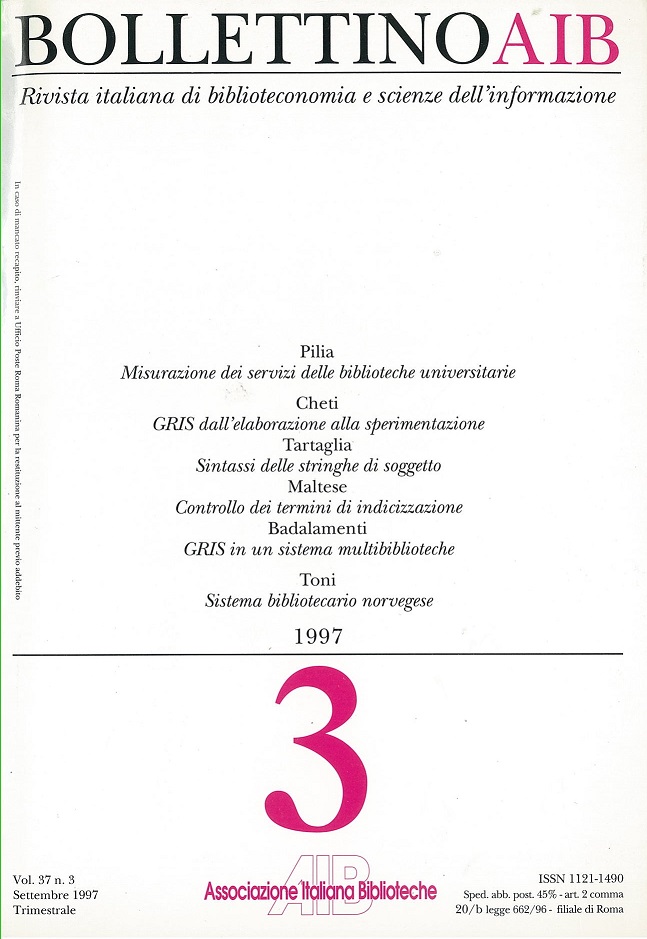Measuring university library services
Main Article Content
Abstract
The topic of measurement is not new to the library world. For some twenty years, professional literature, especially American and British, has dealt with the topic, as is shown by the 600 plus titles listed in the bibliography of the IFLA's recently-published guidelines for measuring the quality of university library services. The initial, theoretical approach was supplanted, in the early 1990s, by a more practical stance, with numerous operational models for librarians. This is the direction in which some international bodies are also moving today; in addition to the manual promoted by IFLA, the provisional version of the ISO manual and that which originated from the PROLIB/PI project financed by the European Commission have also been published.
In Italy, interest in the topic is recent. The current situation can be summarised as one of "ongoing research", in the sense that the various experiments, seminars and discussions now in progress are gradually standardising definitions and methodologies suited to the historical and cultural context of Italian libraries. As regards academic libraries, measurement studies and applications are still few and far between, there is a dearth of documentation and emphasis to date has been on the quantitative aspects of the return with a view to rationalising resources and saving costs.
The work should be continued, but oriented also towards effectiveness and, hence, fostering an assessment of the value of the services and not just of their productivity and costs. The quality of client-oriented services and the need to control the effectiveness of the library's capacity for interaction with its users should become the objectives of the new climate of managerial and organisational measures and the benchmark of the suitability of the players' professionalism to sustain the change of mentality demanded by the continuous broadening and diversification of higher education establishment users and of their needs. The work, which derives from the co-ordination experience of the Sassari University libraries, and in particular from the recording of the work loads, aims to satisfy the need to monitor all organisational aspects, both quantitative and qualitative, with a renewed attention to the client.
The work starts out with some methodological clarifications, dedicated to the manner of use and requisites of the indicators and to the measurement path, offers considerations regarding data collection (on finances, assets, personnel, user spaces and reading places, potential users and services) with a view to creating a computerised system as a mandatory measurement stage, and concludes by proposing some measurement instruments immediately applicable even in libraries with little experience in this field.
A comparative analysis of the main sources of library performance measurement was used to draw up a list of twenty indicators, specifically adapted to the realities of Italian university libraries and oriented to the direct and indirect evaluation of the quality of the service with users as the principal reference. All indicators can respond to the measurement needs of individual libraries, but some are well suited to monitoring a university library system. The paper concludes with a description of the eleven indicators, of the twenty elaborated, which were deemed the most client-oriented. The attention paid to them meets the objective of exemplifying the approach, method, applicability and limits of use of performance indicators. For each indicator, the information is organised on the basis of a grid adopted by IFLA, which appeared the best suited to exemplify the measurement approach through performance indicators, to facilitate their use also by inexperienced librarians, and to highlight all the elements which it was deemed appropriate to take into account in the application phase.
Article Details

This work is licensed under a Creative Commons Attribution-ShareAlike 4.0 International License.
